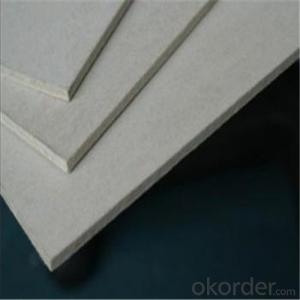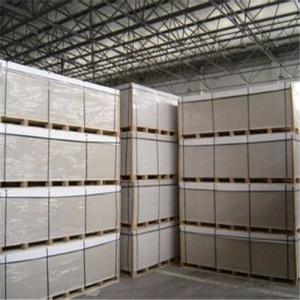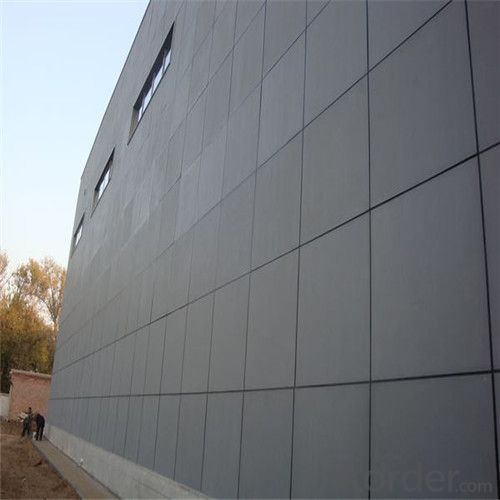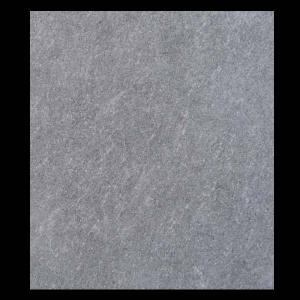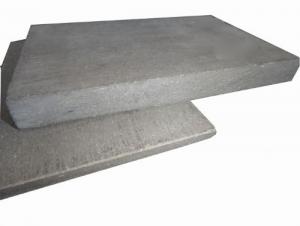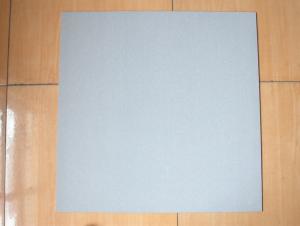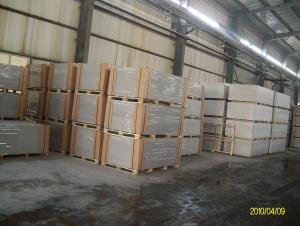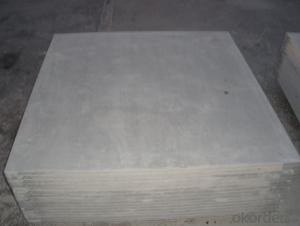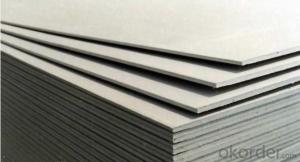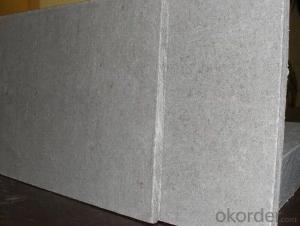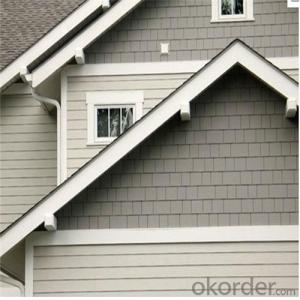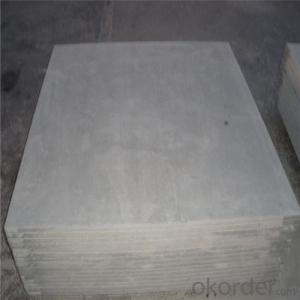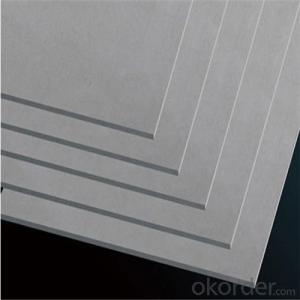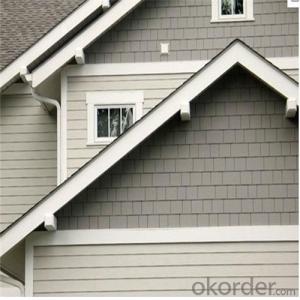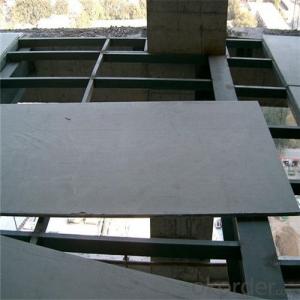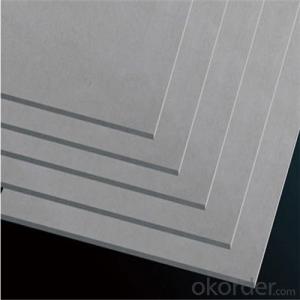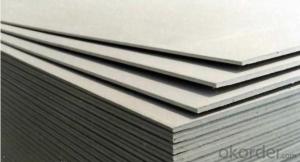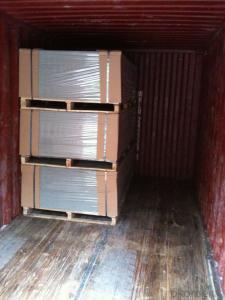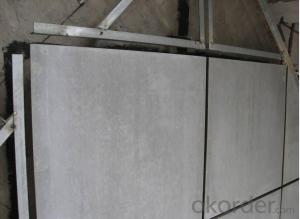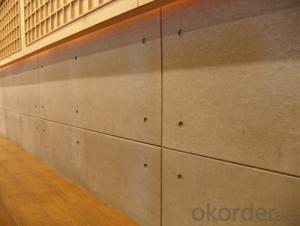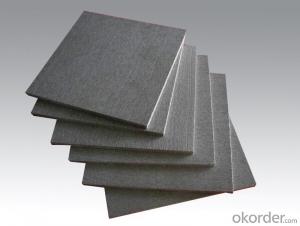Two Sides Sanded Fiber Cement Board CMAX
- Loading Port:
- China Main Port
- Payment Terms:
- TT OR LC
- Min Order Qty:
- -
- Supply Capability:
- -
OKorder Service Pledge
OKorder Financial Service
You Might Also Like
Fiber Cement Board is mainly made of Portland cement and silicate materials as base and cellulose reinforced, forming in Hatschek process and high pressure (7000T press machine for 15 minutes) and fumigation(in autoclave for 24 hours),so it has the advantages of high strength, light weight, anti- freeze, water-resist, fire-proof, damp-proof, sound-absorption , no distortion and no radiation.Used as suspended ceiling, partition, heat insulating board, base plate, billboard, external wall panel, exterior wall cladding, paneling, moving floor, desktop board, fire-resistant air pipe ,back-liners, skirting lines, prefabricated structures, flooring, roofing, door shutters
Application: fire-rated building partition, ceilings, exterior wall cladding, sarking board, light -weight grouted panel, decorative drywall…
Sizes: 1200x2400, 1220x2440, 610x2270, 610x2440, 600x600, 600x1200, 603x603, 595x595…
Thickness: 4.5mm-30mm
Edge: square, bevelled/tapered
Materials: Tobermorite, Portland cement, Quartz sand, wood fiber…
Fire-proof rate: A-class incombustible (GB8624-1997)
Incombustibility: 240 minutes (GB/T9978-1999)
Density: 1.2-1.5g/cm3
Moisture: <30%
Heat conduction: 0.24W/MK (Jc/t564) Average
Sound-absorption: 45db (GBJ75-84)
Anti-bend strength: >12MPa (GB/T7019-1997)
Moisture movement rate: <0.3% (GB/T7019-1997)
Dry shrinking rate: <0.09% (GB/T7019-1997)
Radiation rate: According with Standard (GB6566-2001)
- Q: I would like to build 4 steps on a incline. It is above a retaining wall but will be a good foot away from the wall all on firm packed dirt. I have a couple questions. One side of the steps would be next to the garage wall.1. Can I pour cement up against the cinder wall?2. If so how would someone build steps form without any boards against the one side. So basically just have the one side and front plate.3. Or would you recommend having a board against the wall. Or pull it out after the form has set?
- Have you considered buying pre-cast concrete steps?
- Q: I have an existing hardwood floor that I want to tile over (it's not in good condition). Can I put cement board then tile directly onto the hardwoods or do I need plywood on the hardwoods then cement board then tile? I don't want the floors to be 2 thick in addition to the hardwoods.
- Hillbill gave you good advice. I went to the site he recommended. It's straight up. I would add this; what you're looking for when you're done with the cementatious board is level. And, screws are better than nails on a wood floor.
- Q: We are redoing a small bathroom and I want to redo the old tile and also add some additional tile around some of the other walls. We are planning to use cement board around the tub, but do I need to rip out existing wallboard around the vanity and other walls where I want to add new tiles and replace it with cement backer board? Or should I just add the cement board on top of the existing wallboard in the places I want to add new tile ( I was thinking about maybe tiling halfway up some of the other walls). Thanks!
- First take some rough sandpaper like an 80 grit to rough up the wall that is painted, then use a mastic type adhesive like Acrylpro ceramic tile adhesive from Home Depot. It is $6 for a quart or $13 for a gallon. Use the correct size trowel suggested on the bucket for your tile size. Follow the directions and you will be fine. You would only use Hardibacker or Durock in a shower or bath tub enclosure where heavy use of water goes on. Then you would use the screws made for that product and use thinset adhesive instead of mastic.
- Q: I want to put tiles from floor to ceiling in entire bathroom not just the shower area.
- The walls may not be able to hold that much weight.
- Q: Older house, kitchen floor. There's 3/4 diagonal wood on floor joists after hardwood floor is removed. Can I put down 1/2 plywood/ osb and expect the ceramic tile and grout to last? 100% better to use cement board or that synthetic strand board?
- Use the cement board. You may be able to get away with plywood if you were using an adhesive for attaching it, but if you use thinset, the wood will pull the moisture out of it and crack.
- Q: What is the difference between a cement pressure plate and a cement board?
- Cement pressure plate, also known as fiber cement pressure plate or cement fiber pressure plate, is a natural fiber and cement as raw material, by the pulp, forming, cutting, pressing, curing a new type of building plate. Is a new generation of "green" building materials, in the excellent moisture, fire performance based on the unique environmental protection features. It is based on siliceous and calcareous materials as the main substrate, with cellulose fiber reinforced materials, mixed with other auxiliary materials, through the copy forming, high pressure curing the formation of a new type of building materials. With light, high strength, waterproof, anti-corrosion, fire, large format, good processing, improve construction efficiency and so on. Widely used in civil and industrial buildings. Can be used for building floor, interior wall panels, exterior panels, ceiling panels, curtain wall panels, composite wall panels, insulation materials, roofing and other parts.
- Q: We recently bought a house with a corner tub in the master bathroom. There was a partially covered pipe for a shower head but the walls are not waterproof. Since the plumbing is there for a shower we would like to waterproof the walls and put in a shower head. Is there a chance the builder put up cement board but skipped tiling? Is there a way to tell without ripping the walls down? Also I'm wondering if we need to tear down the existing drywall and put up cement board or if we can just use a type of acrylic shower wall and caulk it really well. Any advice would be appreciated.
- most likely the builder used greenboard in the area you are referring to. That is unless your house was built before 1947. Old houses most likely have lath and plaster walls and are even better than cement board. If I was a betting man, I would say that your walls are not covered with cement board. How to tell: Enlarge the hole where the shower head is to go and inspect the hole and the debris that comes out.
- Q: do i need to put down cement board on concrete before laying tile?
- No, the tiles will bond to the concrete just fine.
- Q: Gypsum board and cement board decoration room difference
- Both due to different materials, internal performance is different, the use of space is slightly different. ???? Gypsum board is gypsum as the main material, adding fiber, adhesive, modifier, by mixing to suppress, dry from. With fire, noise, heat insulation, light, high strength, low shrinkage characteristics, because the gypsum board is relatively easy to put putty, generally used to decorate the paint or paint the top of the paint. But poor water resistance, not suitable for use in humid environments.
- Q: Which is better adhesive or mourter for applying ceramic tile on cement board floor?
- I would use canned adhesive that you spread with a trowel. It is more uniform. Does not break down like morter will, since morter has sand products in it. Besides, ceramic tile usually has spacing that will be filled in by grout, but some actually butts up together, and some comes already attached to a mesh backing. I believe adhesives that are on the market are much better than morter. In addition, adhesives have better holding power, even on cement board flooring, as long as when you trowel it in, you assure you apply pressure on the trowel to force the adhesive into the cement board matrix.
Send your message to us
Two Sides Sanded Fiber Cement Board CMAX
- Loading Port:
- China Main Port
- Payment Terms:
- TT OR LC
- Min Order Qty:
- -
- Supply Capability:
- -
OKorder Service Pledge
OKorder Financial Service
Similar products
Hot products
Hot Searches
Related keywords
